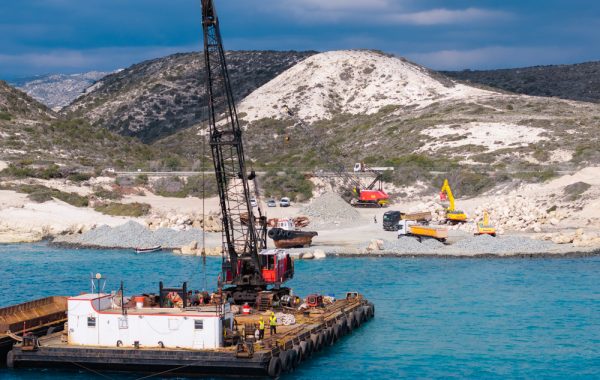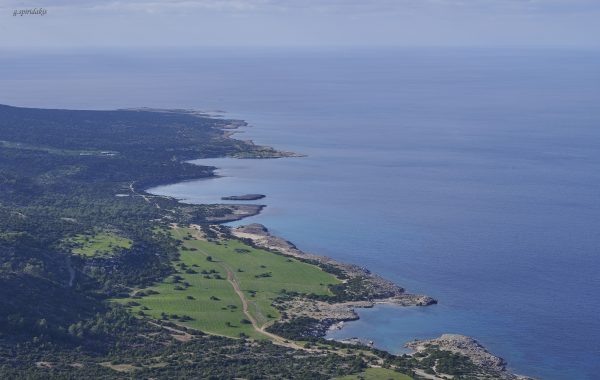1. What is happening with Akamas?
The State’s Plans for Akamas are currently being reviewed for their impact on the environment (links to the relevant studies can be found at the end of this article). These are the Plans for the National Forest Park and for the planning zonation of the whole Peninsula (this concerns the Akamas Local Plan now, and in the near future, the Pegeia Local Plan). Once the evaluation is completed, final decisions will be taken, and the future of Akamas, for better or worse, will be largely sealed.
2. What is a National Forest Park?
The term concerns an area declared a National Forest Park by the Council of Ministers in 2016. The Forest Park covers all state land within the Akamas Peninsula Natura 2000 site (approximately 75% of the Natura 2000 site). The remaining 25% of the Natura 2000 site is mostly private land and is located outside the National Forest Park boundaries.
3. What are the plans for the National Forest Park? What is the problem?
Although the Plan for the National Forest Park envisions some positive developments concerning the regulation of vehicle traffic in the area, many of the proposals are of questionable value for the protection and proper management of Akamas. Some of the most serious issues are:
- Road improvement and ‘visitor node’ creation: the Plan includes the improvement of roads and the creation of Nodes in some of the most sensitive and intact areas of Akamas (more on these ‘refreshment points’ specifically below). The original plan even included paving (tarmacking) part of the Akamas road network, which would completely change the area. Thankfully, this proposal has been withdrawn and we do not expect it to resurface.
- New infrastructure: the State is proposing new infrastructure in Akamas, while no substantial measures have been taken to remove existing illegal structures (eg unlicensed restaurants) that have been operating in the area for years. It is now possible that the new infrastructure will come to add to the illegalities, not replace them.
- Lack of synergy: the Plan for the National Forest Park is not in full synergy with the Management Plans for the protection of the Akamas Natura 2000 site. Although the Management Plans have not yet entered into force, which in itself raises major questions, the management needs of a Natura 2000 site legally outweigh any national regulations, such as National Forest Parks.
In conclusion, we consider that the provisions of this Plan do not serve the protection of the Akamas under the EU-wide Natura 2000 network, which represents the most reliable and established model for sound protective management of such precious nature areas. The emphasis on managing the Park separately from the rest of the Natura 2000 area creates a two-tier situation, within and outside the Park, something that does not reflect the well-established philosophy of proper Natura 2000 site management.

4. What do ‘refreshment points’ (nodes) mean, and what exactly is the problem?
The Plan for the Park proposes the construction of 14 visitor nodes made up of various infrastructures, such as entrance points to the Park, parking lots, toilets, information points, as well as refreshment points and souvenir shops.
Some Nodes are proposed in areas that are extremely sensitive from an ecological point of view, such as Toxeftra, Lara and Fontana Amorosa, but also in areas that have remained intact until now, such as Geronisos and Gioni. Moreover, the interventions that will be required for the operation of the Nodes, such connecting them to the water supply network, is an additional problem.
The main pressure comes from the seven Nodes that will include refreshment points: drinks and snacks. The fear is that these refreshment points will increase traffic in these areas and the ‘stay time’ of visitors. At the same time, a unique opportunity for real financial support of the Akamas communities will be lost, since visitors will be spending money at the refreshment points, instead of in the local communities.
5. And what about the rest of the Akamas area that is not part of the Park? What do the Plans for the planning zonation of the area include?
The Plan for the National Forest Park does not foresee anything for the rest of the Natura 2000 area, since it largely overlooks the fact that the NFP is part of the Natura 2000 area. On the other hand, the Akamas Local Plan, which concerns the whole Peninsula (apart from Pegeia area for which there will be a separate Local Plan), proposes various new planning regulations for the area that was ‘left out’ of the National Park. Most provisions are completely incompatible with the sustainable management of this precious and wild area. These include developments outside village boundaries, such as isolated housing (a problematic policy nationwide), ‘visitable farmsteads’, massive resort-type developments, as well as new quarry zones near the Androlikou Gorges.

6. What does BirdLife Cyprus suggest for the planning zonation of the area?
Our view and vision has always been that the planning mistakes that were made in so many other areas in Cyprus should not be repeated at Akamas. Development should be limited and promoted within Akamas village community boundaries. This is the only way to achieve sustainable protection of an area with such high ecological value like Akamas, while also preserving its comparative advantage for tourism, which is its natural landscape. There is ample space within existing development zones around and within local community boundaries that can be exploited in a way that preserves the cultural identity of the area.
7. What is BirdLife Cyprus calling for?
We call for the significant modification of these two State Plans, in order to support the sustainable protection and development of the area. Specifically, our main ‘asks’ are:
- Immediate removal of all illegal structures, before any new infrastructure is approved
- No asphalt paving or public road registration in the Natura 2000 areas of the Akamas Peninsula. Any road improvements should be limited to what is absolutely necessary for the safety of visitors.
- Visitor node facilities to be limited to controlling access, information and hygiene needs, and visitors to be encouraged to visit the local communities for supplies, food & drink.
- No building of visitor nodes in intact areas.
- Relocation of Park entry nodes to within the Akamas villages.
- Withdrawal of proposals for developments concerning overnight stays, food and leisure outside the community boundaries (especially isolated housing, ‘visitable farmsteads’ and the massive resort-type developments) .
- Withdrawal of proposals for new quarries near the Androlikou Gorges.
- Transfer of any private property development rights to areas with less ecological value, where legally feasible.
- Immediate issuing of the Management Decrees for the Natura 2000 areas of the Akamas Peninsula, based on existing Natura 2000 management plans.
8. What can you do?
We will soon by launching a call to action to ask the relevant Ministries to be account for their plans and to tell us how they will ensure the sustainable protection and management of the entire Akamas Peninsula. If you are interested in receiving information about this action, please fill in the form below.




